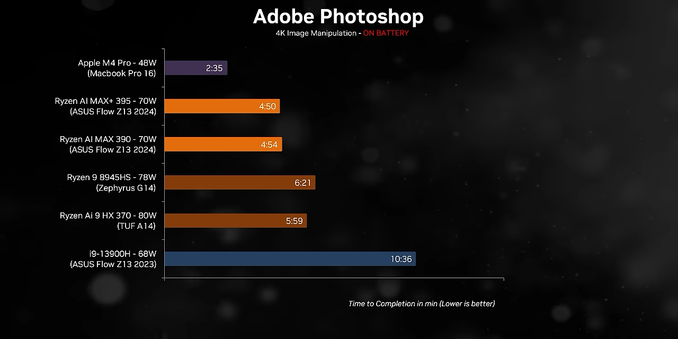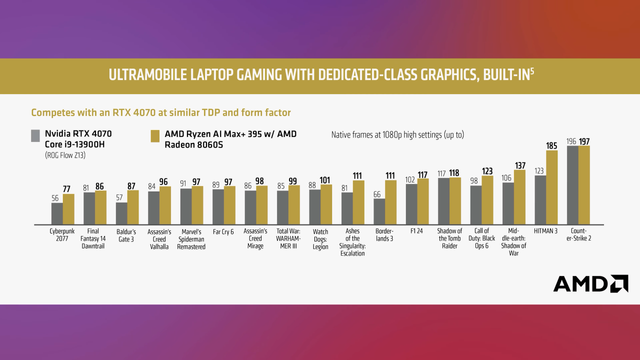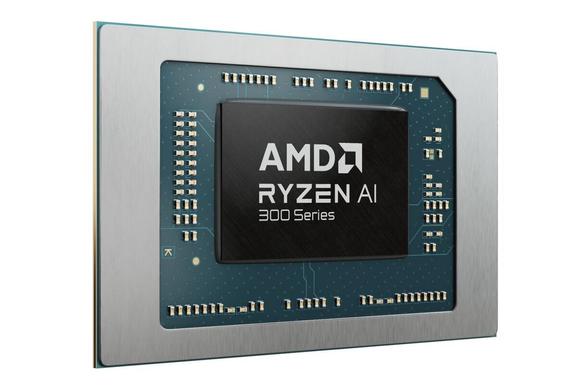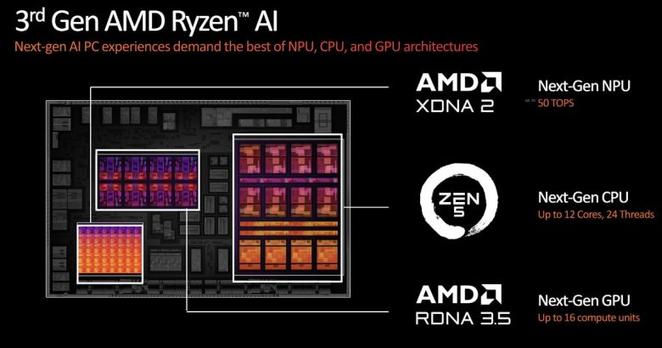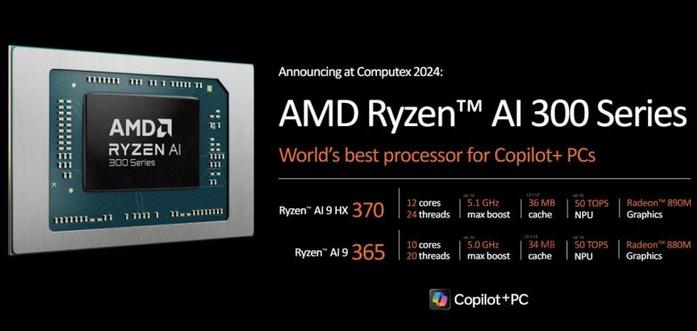AMD’s next-gen mobile chips are the Ryzen AI 300 series with up to 50 TOPS of AI performance (plus Zen 5 CPUs, RDNA 3.5 graphics)
When Microsoft launched its Copilot+ PC brand last month, the only computers that qualified were those with Qualcomm Snapdragon X Plus or Elite processors, because those were the only PC chips announced to date with neural processing units capable of delivering the more than 40 TOPS of AI performance Microsoft had set as the baseline.
But Intel has already announced that its Lunar Lake chips for Copilot+ PCs are coming soon. And now AMD says its first Copilot+ chips are on the way too, and AMD is promising even faster AI performance than Intel or Qualcomm, which could help explain why the company is completely rebranding its laptop processor line. Goodbye Ryzen 8040 , hello Ryzen AI 300 series.
AMD says its new laptop processors feature the company’s 3rd-gen neural processing units (NPUs) based on the company’s XDNA 2 architecture, which the company says brings up to 5 times the compute capacity while doubling power efficiency.
The first Ryzen AI NPU was introduced with the Ryzen 7040 “Phoenix” family, and it was followed by Ryzen 8040 “Hawk Point.” And that’s probably the rational for giving the first Ryzen AI-branded chips model numbers in the 300 range.
But skeptics would be forgiven for thinking that this is the company’s attempt to give their new chips a bigger number than Intel’s upcoming Lunar Lake processors, which will most likely be branded as “Core Ultra 200” series chips.
Anyway, AMD is promising that its new processors will deliver 50 TOPS of on-device AI performance, which is a big boost from the 16 TOPS offered by its Ryzen 8040 chips, and noticeably higher than the 45 TOPS in Qualcomm’s new chips or the 40 TOPS Intel says you’ll get from Lunar Lake.
That will allow high-performance, low-power on-device processing for AI features like Windows Studio Effects, live captioning and translation of video calls, Microsoft’s new Recall feature for Windows 11, and AI-enhanced capabilities in photo and video editing tools, among other things.
But as much as tech companies are trying to push AI as a must-have feature, the truth is that it’s still early days for any of this stuff, and it’s unclear if anybody’s going to rush out and buy a new laptop because the sticker on the box says it offers a few more TOPS than the competitor. Most people aren’t really using AI tools very regularly yet.
AMD’s new chips have a few other improvements that could make them compelling even if you don’t care about AI though.
First, AMD says that the new chips will feature Zen 5 CPUs with double-digit performance improvements over Zen 4 thanks to increased bandwidth, among other things. The chip maker is also increasing core counts, with some Ryzen AI 300 series processors featuring up to 12 cores and 24 threads, although it’s doing that by adopting a hybrid architecture that combines a set of higher-performance Zen 5 CPU cores with some smaller, slightly lower performance Zen 5C cores.
AMD is also giving the integrated graphics a boost, something it didn’t bother with when moving from Ryzen 7040 to Ryzen 8040. While those two chip families featured support for up to a Radeon 780M iGPU with up to 12 RDNA 2 GPU compute units, the new Ryzen AI 300 Series supports up to a Radeon 890M GPU with up to 16 RDNA 3.5 compute units.
At least two processors will be available at launch:
CPU Cores / ThreadsZen 5 + 5C coresBase / Max Boost CPU boostL2 + L3 cacheRyzen AI NPUGPUTDPRyzen AI 9 HX 37012 / 244 x Zen 5 + 8 x Zen 5C2 GHz / 5.1 GHz36MB50 TOPSRadeon 890M (16 x RDNA 3.5 up to 2.9 GHz)15-54W
Ryzen AI 9 36510 / 204 x Zen 5 + 6 x Zen 5C2 GHz / 5 GHz34MB50 TOPSRadeon 880M ( 12 x RDNA 3.5 up to 2.9 GHz)15 – 54W
It’s interesting to note that while AMD claims its Ryzen AI 300 series processor deliver better AI, CPU, and graphics performance than Qualcomm’s new Snapdragon X Elite chips in selected benchmarks (including GeekBench, Procyon Office, Cinebench, and 3DMark Night Raid), it seems like that performance may come at the cost of efficiency.
One of the key selling points for Qualcomm’s new laptop processors is that they offer better performance-per-watt than the latest Intel or AMD processors. While AMD’s new Ryzen AI 300 series processors have a default TDP of 28 watts, they can be configured with to operate as low as 15 watts or as high as 54 watts – and most of the benchmark results AMD is highlighting are for systems configured in the 45 to 54 watt range, which means that performance may come at the cost of battery life.
Hopefully we won’t have long to wait to learn which chips truly offer better bang for the buck when it comes to real-world performance. The first Snapdragon X-powered laptops are set to hit the streets on June 18th, and AMD says there are more than 100 systems powered by Ryzen AI 300 chips are on the way, with the first models expected to launch in July.
Some of those first systems include notebooks announced at Computex this week, including:
- Asus Zenbook S 16
- Asus Vivobook S 14, 15, and 16
- Asus ProArt X13 and P16
- Asus ROG Zephyrus G16
- Asus TUF Gaming A14 and A16
- MSI Prestige A16 AI+
- MSI Stealth A16 AI+
- MSI Summit A16 AI+
#amd #chips #computex2024 #radeon880m #radeon890m #rdna35 #ryzen #ryzenAi #ryzenAi300 #ryzenMobile #strixPoint #xdna2 #zen5
